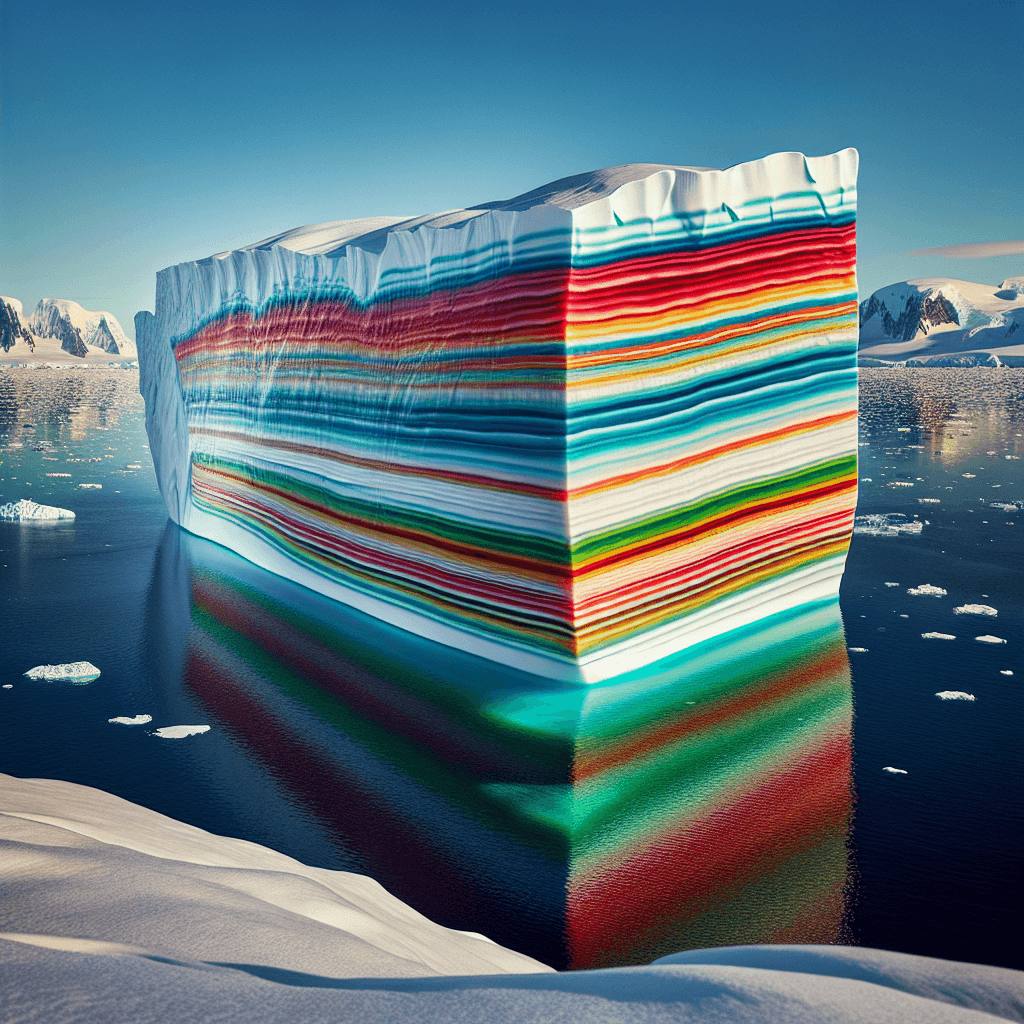Nature's Palette: The Science Behind Antarctica's Colorful Striped Icebergs
Discover the captivating story behind Antarctica's striped icebergs. These natural masterpieces, streaked with vibrant green, blue, and brown, reveal the secrets of their unique formation.


Too Long; Didn't Read
Colorful stripes on Antarctic icebergs are formed by different layers of freezing water. Blue stripes are pure, compressed ice; green stripes come from frozen, algae-rich seawater; and brown or black stripes are caused by trapped sediment.
Nature's Palette: Why Do Some Antarctic Icebergs Display Astonishing Colorful Stripes?
Imagine gliding through the icy waters of Antarctica and encountering not just a colossal white monolith, but an iceberg streaked with vibrant emerald green, deep sapphire blue, or even earthy brown stripes. These natural masterpieces are more than just beautiful; they tell a story of their formation. Why do some Antarctic icebergs display astonishing colorful stripes, transforming them into floating works of art? This post will delve into the fascinating science behind these colorful phenomena, revealing the unique processes that paint these icy giants.
The Canvas: Understanding Basic Iceberg Hues
Before we explore the vibrant stripes, it's essential to understand why icebergs typically appear white or blue.
- White Ice: Most icebergs are born from glaciers, which are formed by compressed snow. This ice is riddled with tiny air bubbles. When light strikes these bubbles, it scatters in all directions, making the ice appear white – much like snow itself.
- Blue Ice: Sometimes, ice becomes incredibly dense. This can happen when meltwater seeps into cracks and refreezes quickly, expelling air bubbles, or when ice is under immense pressure deep within a glacier. This dense, bubble-poor ice absorbs longer wavelengths of light (like red and yellow) and scatters shorter, blue wavelengths back to our eyes. The purer and denser the ice, the more intensely blue it appears.
Unveiling the Stripes: The Science Behind the Colors
The truly astonishing stripes – green, brown, black, and even more intense blue – are formed by different materials and processes incorporated into the ice as it forms and evolves.
Emerald and Jade: The Green Stripes
Green stripes are perhaps the most striking and are primarily linked to the ocean.
- Marine Ice Formation: These vibrant hues often originate from seawater freezing onto the underside of ice shelves. This "marine ice" can trap dissolved organic matter, particularly microscopic algae (phytoplankton), which are rich in chlorophyll.
- The Big Flip: When an iceberg calves from an ice shelf and sometimes overturns or partially rotates, these layers of phytoplankton-rich marine ice are exposed, creating stunning green bands. Scientists at institutions like the Australian Antarctic Division have noted that these algae thrive in nutrient-rich waters, and their incorporation gives the ice its distinctive color.
Earth Tones: Brown, Black, and Yellow Stripes
Darker stripes tell a tale of the iceberg's journey over land.
- Glacial Grinding: As glaciers flow towards the sea, they act like giant conveyor belts, scraping and grinding rocks, soil, and other sediments from the land beneath them. This material, known as basal debris or moraine, becomes embedded in the ice, often at the bottom layers of the glacier.
- Revealed Layers: When an iceberg containing these sediment-rich layers breaks off and is eroded by wind and waves, or if it flips, these earthy deposits are revealed as distinct brown, black, or yellowish stripes.
Vivid Blue Bands: Pure Water Refrozen
While some entire icebergs can be blue, distinct blue stripes within a predominantly white iceberg tell a specific story.
- Crevasse Filling: Glaciers are dynamic and often develop deep cracks or crevasses. Meltwater from the surface can flow into these crevasses. If this water refreezes rapidly, it forms very clear, bubble-free ice.
- A Stripe of Purity: This exceptionally pure, dense ice appears as a brilliant blue stripe once the iceberg calves and these internal features are exposed. These stripes are essentially frozen rivers that once flowed within the glacier.
A Layered History Exposed
The striped appearance is fundamentally due to the layered nature of glaciers and ice shelves. Each layer represents different conditions or events during its formation – a season of heavy snowfall, a period of melting and refreezing, an influx of sediment, or the incorporation of marine life. When an iceberg calves, it's like taking a cross-section of this geological and biological history, and the stripes are the visible chapters of that story.
Conclusion
The astonishing colorful stripes on some Antarctic icebergs are not random occurrences but visual records of their complex life cycles. From the entrainment of marine algae creating vibrant greens, to land-derived sediments painting earthy browns, and refrozen meltwater forming intense blue bands, each color tells a scientific story. These floating galleries are a testament to the dynamic interplay of ice, ocean, land, and even life in the polar regions. So, the next time you see a photo of a striped iceberg, remember you're not just looking at frozen water, but at a beautiful and informative piece of Earth's ongoing geological and biological narrative.


